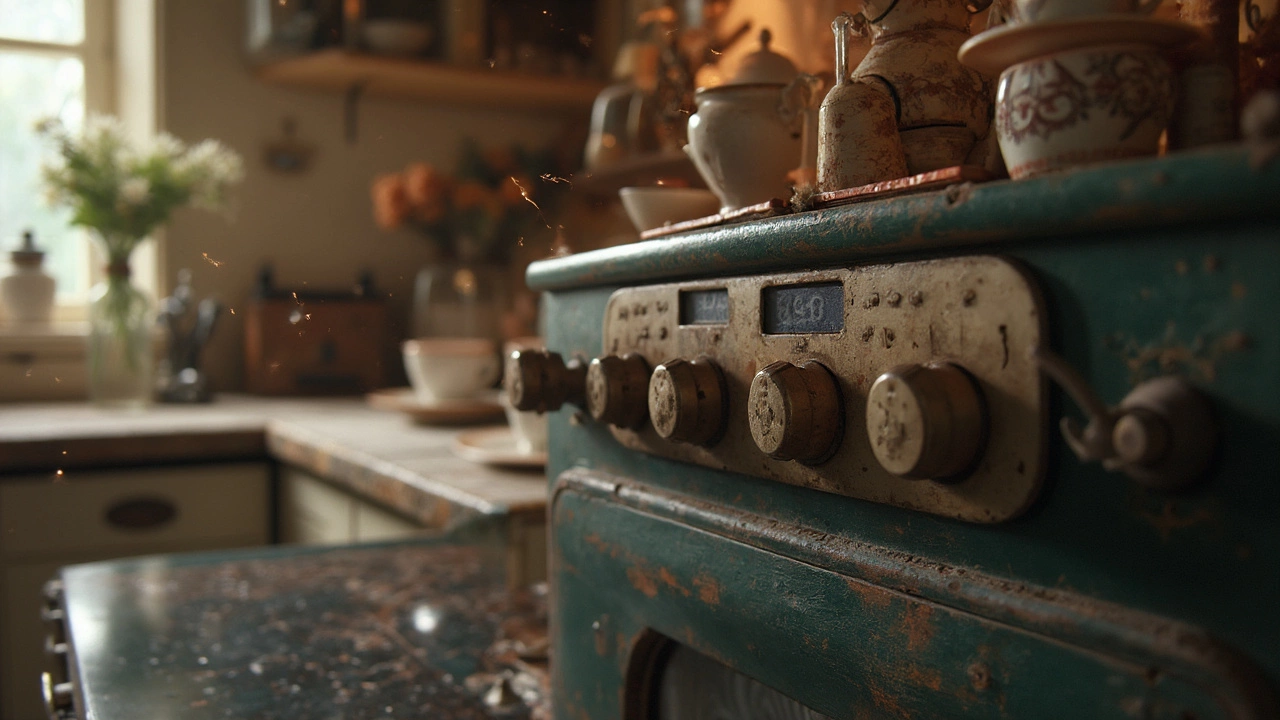Picture this: it's Friday night, and you're all set to make a lovely dinner, but suddenly your oven acts like it’s got a mind of its own. Is it the oven throwing a tantrum, or could it be the control board causing the chaos? Knowing the early signs of a dodgy oven control board can be a real game-changer. It’ll save you from the hassle of an unexpected breakdown and might give you a shot at a quick fix before things go south.
First off, keep an eye out for those odd days when the temperature setting seems off. Like when you know you set it to 180°C, but somehow, your cake comes out looking like it was on a sunbed too long. This inconsistency could be your first hint of trouble. Also, watch for any unresponsive buttons or if the whole panel decides to take a nap halfway through cooking your lasagna.
- Signs Your Oven Control Board Might Be Dying
- Why Your Control Board Fails
- Testing the Control Board
- DIY Fixes and When to Call a Pro
Signs Your Oven Control Board Might Be Dying
If you’ve caught yourself wondering why your trusty oven has been acting all quirky lately, it might just be the oven control board trying to tell you something. Don't ignore these little hints, as they could be signs that this key piece of tech is on its way out.
The first thing you might notice is inconsistent temperatures. Trust me, it’s not your cooking skills! You set the oven to 180°C, but it’s playing a game of hot and cold? That inconsistency is a common sign of a faulty control board, messing up what the display is telling you from what’s happening inside the oven.
Next up, are those buttons acting like they’re not even there? If you’re pressing the buttons harder than your TV’s remote during the rugby finals but getting zero response, it's likely the control board. The buttons communicate with it, so if they’re unresponsive, the board might be on the blink.
Also, if you notice error codes flashing like it's the disco era, that's your oven trying to say something’s not right. These codes can sometimes be resolved by a simple reset, but if they keep popping up, it’s your control board waving a red flag.
- Temperature inconsistencies - your settings don’t match results.
- Unresponsive buttons - nothing happens when you press them.
- Error codes - they keep coming back even after resets.
Got a buzzing or humming noise that makes you rethink the whole no-soundtrack cooking experience? Well, that's another suspicious sound pointing to control board issues.
If you ticked off a few of these signs, it might be time to do some checking or call in a pro. A poorly behaving oven control board might not mean buying a new oven, but catching it early could save a lot of hassle later on.
Why Your Control Board Fails
So, you're probably wondering, "What's the deal with my oven control board going on strike?" Well, these little guys are pretty much the brain of your oven, so when they start acting up, it can be a real pain. There are a few common culprits that could lead to your control board calling it quits.
First up, let’s talk about power surges. Just like how a bolt of lightning can fry the electronics in your house, a sudden jolt of electricity can mess with the delicate circuits of your oven control board. This can lead to all sorts of weird behavior.
Another biggie is simple wear and tear. Anything electronic that’s on the job day in, day out is bound to start showing its age eventually, right? That’s the case here. The heat and regular use can degrade the components over time.
And let’s not forget about moisture. Kitchens can be like a steam room sometimes, and if moisture finds its way into the control board, things can short out or corrode. Keeping the area dry and vented helps a lot.
"Regular maintenance and timely repairs are crucial for the longevity of your kitchen appliances," says appliance expert Mike Jones, who’s been fixing ovens for over two decades.
Then there's the question of the man-made errors. Ever pressed buttons a little too eagerly? Repeated, harsh physical interactions can lead to broken buttons or damaged connections inside.
Now, you might be wondering if there’s a quick checkup you can do. While not foolproof, a visual inspection sometimes reveals obvious things like burnt areas on the board. But be careful, messing with electricity is not a DIY project for the faint-hearted.
In case you're curious about the failure trends, have a sneak peek at this small table:
| Cause of Failure | Percentage of Cases |
|---|---|
| Power Surges | 35% |
| Wear and Tear | 30% |
| Moisture | 20% |
| User Error | 15% |
Understanding why your control board could fail helps you strategize whether it’s time for a repair, a replacement, or just some good old TLC.

Testing the Control Board
So, you're ready to play detective and put your oven control board to the test to see if it's the sneaky culprit behind your cooking disasters. First thing's first, make sure your oven is safely unplugged before you start poking around. Safety first, right?
Once you've done that, remove the back panel of the oven to get a peek at the control board itself. If you're wondering what to look for, glitches often show themselves through obvious signs of wear, like burnt or damaged connections.
You'll need a multimeter for this next bit — it's your trusty sidekick in checking electrical components. Here’s how you can get started:
- Set your multimeter to the resistance setting (Ω).
- Carefully place the probes on the board's terminals. You’re checking if there’s continuity, which means your board is still talking to the rest of the oven.
- Healthy readings usually show low resistance. If you see infinity or zero, the control board might be toast.
Spotting an issue here? Well, it might be time to get a new control board in play. But not so fast, sometimes, the issue could be simpler — like a loose wire that's easily fixable with just a screwdriver and some patience.
For those who like a bit of data, here's a quickie:
| Component | Normal Resistance Range |
|---|---|
| Oven Control Board | 5-20 kΩ |
If you're feeling like a mad scientist but aren't sure of your results, it's okay to call in the pros. They have the gear and the know-how to pinpoint the problem faster than you can say "pizza night." Just remember, there's no shame in admitting defeat if it means getting your oven back to its prime.
DIY Fixes and When to Call a Pro
So, your oven's been flipping out like it's possessed. Maybe it’s time to roll up those sleeves and see if you can tackle those issue yourself. Before doing anything, ensure the oven is unplugged. You don’t want a nasty shock to add to your to-do list.
For basic checks, start with resetting the control board. It might seem too simple, but sometimes unplugging your oven for about 5-10 minutes can resolve electronic hiccups, just like rebooting your computer. Plug it back, and see if it starts behaving again.
If that doesn’t work, consider inspecting the wiring. Open up the back panel and take a careful look at the connectors. Loose or burnt connections could be the culprit. Tighten any loose wires and clean off any corrosion you find. But remember, if something looks way out of your league, safety first—better leave it be!
Replacing the control board yourself isn't necessarily rocket science, but it depends on how comfortable you are fiddling with electronics. Find the model number of your oven, get the right replacement part, and hire a trusty screwdriver. Oven control board replacement generally involves unscrewing a few panels and swapping the old board for the new one. Instructions should come with the part, or you can find a sea of how-to videos online.
But when do you call a pro? If the oven control board replacement didn’t fix the issue, or if you identify a bigger underlying problem like a faulty sensor or thermostat, it’s pro time. Professionals have the tools and expertise to dig deeper without making things worse. Plus, handling gas connections or delicate wiring aside from electrical components can be dangerous if mismanaged.
The general rule is, if you find yourself struggling or feeling out of your depth, don’t hesitate to bring in an expert. That’s what they’re there for. Better safe than sorry, especially with something as crucial as your oven.


